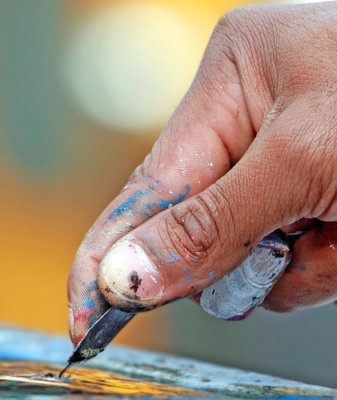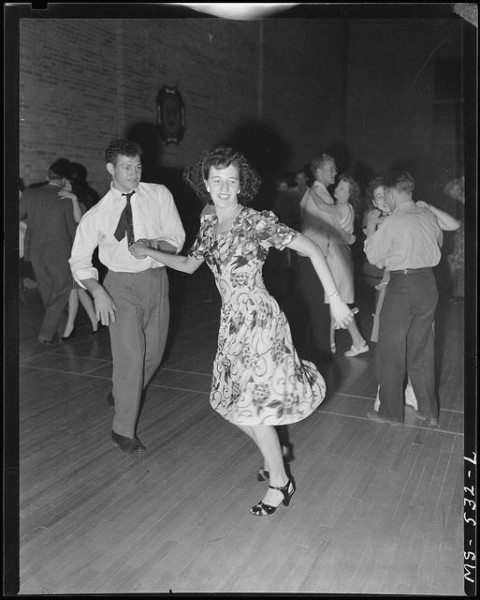Choose Your Actions, Choose Your Mood – CBT Behavioral Interventions
 Cognitive Behavioural Theory (CBT) is centred around the relationship between how we think, feel, and act. While CBT therapy sessions spend a fair amount of time looking at how you can monitor and change your thoughts and thus help your mood, another part of CBT is looking at the behavioral aspect of your low moods – the way that things you do affect how you feel.
Cognitive Behavioural Theory (CBT) is centred around the relationship between how we think, feel, and act. While CBT therapy sessions spend a fair amount of time looking at how you can monitor and change your thoughts and thus help your mood, another part of CBT is looking at the behavioral aspect of your low moods – the way that things you do affect how you feel.
The idea is that by changing the actions you take in life, you can have a powerful impact on your thoughts, which then changes your emotions and mood.
A simple example of this is that when we actually manage to hit the gym we often then think “I had a productive day” and feel better about ourselves.
CBT calls this process, of using actions to intervene and affect thoughts and therefore how we feel, ‘behavioral interventions’. Your CBT therapist, if focussing on behavioral interventions, would introduce techniques to help you to identify and then increase the activities that improve your mood, while at the same time lessening those activities that bring on negative moods.
But you can try out similar techniques for yourself. Here are five CBT-inspired ways to use actions to change your thoughts and moods for the better.
5 CBT-Inspired Ways to Take Actions Toward a Better Mood
1. Take Charge of Time

By: Fabíola Medeiros
A common side effect of depression is to lose the desire to do the things you used to enjoy, or what a therapist might call ‘avoidance’. Of course doing less of what brings you happiness then increases your low moods. It becomes a vicious cycle of depression causing inactivity which then triggers more depression and thoughts like “I’m useless, I’m best left on my own”.
So really, the immobility that depression brings ends up not just a side effect, but unfortunately a cause of more depression.
Activity monitoring and scheduling, as this CBT behavioral intervention is called, is a technique to help low moods by breaking this cycle of immobility. Essentially, it’s a way to push yourself to do things even though you don’t ‘feel like it’. It does this by first helping you get a a clear picture of how you are actually managing to spend your time and how that is working for you, and then helping you make a plan to do activities that make you feel good.
The bonus of monitoring and scheduling your activities is that it also allows you to challenge the negative judgements about yourself depression can bring like ‘I don’t do anything with my time” or ‘this week has been useless and terrible’. Often such things aren’t even true and by tracking what you are doing you have the proof you need to stop such thoughts.
HOW TO USE THIS TECHNIQUE:
- Write down every single thing you do over the space of the next week. It’s best to make a chart with your week laid out in hours (or you can use a diary that has each day broken into hours if that’s easier).
- A timer or alarm clock set to go off every hour is the best idea – most phones have such a function nowadays.
- Don’t judge yourself for what you have or haven’t done, or try to do more than you would otherwise. The point is to just get a baseline of where you are now. Improvements can come later.
- At the end of the week, look over what you have done. Try to see pattens. Did you do more or less than you expected? Can you already start to see where certain activities led to worse mood and less activity for the rest of the day, whereas other things you did helped you feel better?
- Now make yourself a schedule for the next week, with all the things you have to do (work, school, etc) but also including things that make you feel good as well as confident. Go to the next step for how to do this…
2. Do Things You are Good at and Enjoy

By: Ian Sane
As you might have noticed looking over your week, when you do things that make you feel good or make you feel a sense of accomplishment you tend to have a rise in your mood, which can then lead to more positive activity.
Or you might have alternately noticed that because of your low mood you didn’t do any of the things you like doing. What could happen to your mood if you somehow could get yourself to reintegrate the things that used to bring you joy?
CBT suggests we clearly identify the activities that bring joy and confidence and then carefully schedule them in to our week. This behavioural intervention is called Increasing Pleasure and Mastery.
The idea is that if you consistently do such actions your behaviours will increase your feel good factor until you might find your mood lifting more and more. It’s like the opposite pattern to the immobility one that we mentioned above – this one spirals you up, not down.
HOW TO USE THIS TECHNIQUE:
- First, go through all the activities your recorded in your week of time monitoring and next to all the activities you did that bought you pleasure, write a P. (Examples of pleasurable activities can include watching TV, being around friends, having a nice bath, and sitting out in the garden.)
- Then write a number between one and ten that rates how much pleasure the activity bought you.
- Now go back through your schedule and note all the things you did that made you feel accomplished- or just where you were taking care of yourself or others,. Often when depressed we never feel accomplished, but taking care of yourself is an accomplishment.
- These are ‘mastery’ activities, so write an M next to them, and again put a ranking from 1-10. (Examples of mastery activities include cooking yourself a healthy meal, doing your bills, getting the housework done, spending time journalling, or taking care of your kids.)
- It’s a good idea to then rewrite these things you’ve identified as ‘pleasure and mastery’ activities up into their own lists, and while you are at it add things that you would like to do that maybe you didn’t get to in the week you were monitoring your time. For example, you might want to add ‘go for a swim’ to your pleasure list and ‘get my hair cut’ to the mastery list.
- Now take at least 5 items from each list and schedule them in to your coming week. Not just in your head, but on paper, into your diary. Note that ideally, you only want to do one mastery activity a day as you don’t want to set yourself up for failure- (learn more on this front in the next section).
- Continue this scheduling, ideally, for eight weeks. Even if you start to feel more active and like your moods are lifting keep going with it so it becomes habit.
A tip is to schedule pleasurable activities after master activities, so that they can act like a kind of reward system to encourage you to get things like the housework done!
Do not talk yourself out of booking in any pleasurable activities as ‘you don’t have the time’. It’s important to remember that a weekly schedule of activities that make you feel better can help change your depression, which actually brings you energy and thus makes you able to do more with your time. So see it as a crucial intervention. Look at your week and cross out what isn’t essential and make room for pleasure and mastery.
And if you are balking at the idea of scheduling in something so ‘simple’ as doing the dishes, because in this moment if feels an obvious you will get it done, remember that if depression hits these things often get left. And also remember that if you write it down and achieve it, you’ve created a feel-good moment for yourself.
3. Take it Step-by-Step

By: Tim Green
Of course all the scheduling in the world will not help you feel better if you don’t manage to actually achieve any of it – in that case it could indeed make you feel worse! Part of planning activities is making sure they are realistic and you are not setting yourself up for failure.
Graded Task Assignment (GTA) is a CBT technique for turning overwhelming tasks into manageable achievements. In other words, see everything as step-by-step. This involves breaking a big goal into smaller goals that you put in the most logical, achievable order.
For example, applying to university would involve deciding what course you want to take, investigating the schools that offer the course, downloading the application, filling out the application, perhaps writing some essay questions, finding references, submitting the application, figuring out your finances, applying for loans… etc. It wouldn’t make sense to fill out applications for courses you have not decided are definitely for you, it would create stress and waste time that just creates more stress.
This behavioral intervention is also helpful when you have big difficult tasks coming up, or something that is going to require a substantial amount of time to finish.
HOW TO USE THIS TECHNIQUE:
- Choose an activity or goal to break down. Look at all the activities you have scheduled in for next week. Is there one that seems a bit big? If not, think of a goal you’d like to accomplish over the next month and practise on that.
- Write down your activity or goal, then break it down into all and every smaller step you can think of. For example, if you scheduled in ‘go to the gym’ you could break that down to have my gym outfit washed, have my bag packed, buy a bottle of water, find my membership card…
- Put the steps you’ve come up with into the most logical order. There is no point in packing your gym bag if you’ve lost you membership card.
- Schedule in your first step. If you chose an activity from your schedule, perhaps reschedule the various steps now so that you are definitely going to get the activity done. If you are working with a general goal, pick one task to get started on and either do it now if you have time or schedule it into your week.
- Match the task you choose to your present energy levels. Do not assume you can accomplish what you might have previously during a time when life was not as challenging. It’s better to choose a task that is too easy but you will accomplish then something you won’t.
Don’t forget to take time to note how it feels to get a step of your goal done, letting yourself feel good and honouring yourself with some positive praise, like your therapist would if you were in sessions.
For more help with setting achievable goals, see our guide to setting SMART goals.
4. Use Physical Activity
 Exercise is not going to make the list of pleasure activities for many of us, and even it if we do manage to get it on to our mastery list, we might be tempted to not really ever schedule it in.
Exercise is not going to make the list of pleasure activities for many of us, and even it if we do manage to get it on to our mastery list, we might be tempted to not really ever schedule it in.
But research has shown that a reasonably high level of exercise (approximately 3 times per week for 45 minutes each go) has a considerable positive effect on depression. In other words, of all the activity choices that can elevate our moods, exercise is so far proven the most useful.
The secret is to take all you’ve learned above to make exercise more likely to happen for you.
HOW TO USE THIS TECHNIQUE:
- Schedule exercise before a pleasure activity so there is a reward waiting.
- Remember to break down your exercise goal into steps. Saying ‘I am going to start exercising’ won’t get you far but noting that the first step is deciding what sort of exercise you’ll try and where you can go to do it will.
- Consider ways exercise could somehow become a pleasure activity. It’s not impossible – things like dance and walking in nature with friends are both forms of exercise!
- Don’t overlook easier ways to achieve the goal. There is nothing wrong with dancing around your living room for 45 minutes to your favorite tunes or walking around the city for an hour if you can’t get out to the country.
- And to keep yourself exercising, remember to notice how you feel after exercising. You might even want to keep a record of pleasure rankings in your diary each time you exercise, again using that 1-10 scale, which can act as a kind of proof to your mind that exercise is indeed worth it.
5. Relax Into It
Often when depressed we replace enjoyable activities with sitting around feeling anxious and stressful, which further immobilises us and stops us from doing anything. So relaxation exercises can be an activity your CBT therapist might introduce to your sessions or encourage you to do at home when your anxiety and panic arises.
Therapists might use one or a combination of muscle relaxation, deep breathing, guided imagery or the increasingly popular mindfulness meditation.
Relaxation might sound overwhelming, but once you get the hang of it, it can be so enjoyable it might end up on your list of pleasurable activities to choose from.
HOW TO USE THIS TECHNIQUE:
- Experiment with different relaxation techniques that suit you. This doesn’t have to be yoga! Try our guide to progressive muscle relaxation or treat yourself to a two-minute mindfulness break.
- Create a supportive environment when using relaxation techniques. Try for a quiet, safe and comfortable place where you have privacy. You might want to wear comfortable clothes and dim the lights.
- If you really feel to busy and need something more adaptable that can be done anywhere, try deep breathing. This means that whenever you feel stressed, tired, or overwhelmed, you take a moment to consciously take at least three long, slow breaths, just for a moment forgetting about everything but the sound and feel of your breath coming in and out. To make sure you are breathing deeply, try placing your hand on your abdomen and ensure that it rises and falls slightly with each breath.
Conclusion
CBT is a proven effective short-term therapy that gives you useful tools to manage your stress and low moods that you can then continue to use over your lifetime to stay well. If you have found the behavioral interventions above effective, remember that they are only a small part of what CBT therapy involves. Also, working through such techniques with a qualified therapist usually ends in even better results as they can help you troubleshoot, guide you to stick to plan, and encourage you to notice your improvement.
Have you found this article useful? Don’t want to miss the next one? Why not join our newsletter list above and you’ll receive an alert whenever we post a new piece.




